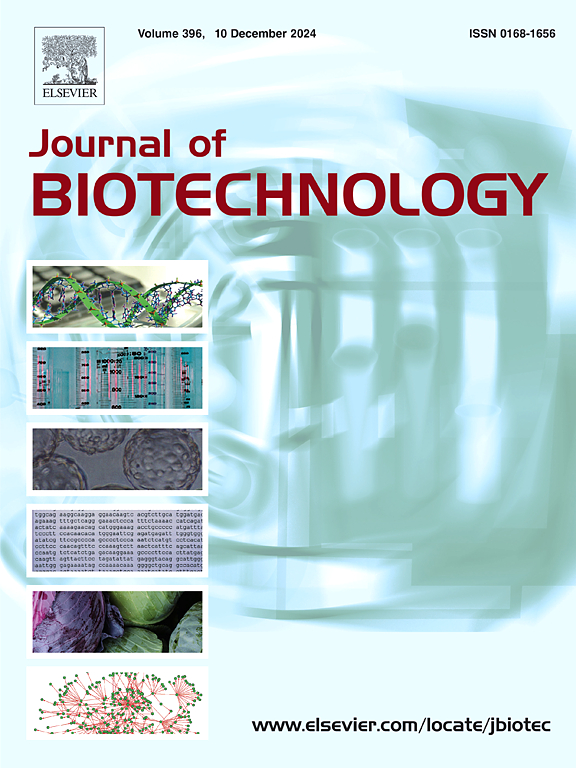Efficient genome engineering in Agrobacterium tumefaciens C58 using recombineering assisted by CRISPR/Cas9
IF 3.9
2区 生物学
Q2 BIOTECHNOLOGY & APPLIED MICROBIOLOGY
引用次数: 0
Abstract
Recombineering, a technique derived from phage-encoded homologous recombination, has emerged as a vital approach for bacterial genome engineering. Agrobacterium tumefaciens is extensively utilized to transfer DNA into the host plant genomes. To facilitate the transformation of various plant species, particularly those of considerable economic value, genetic modifications of Agrobacterium strains are essential. Our previous studies established an Agrobacterium-specific phage-encoded homologous recombination system for Agrobacterium species. Yet, recent investigations have indicated that there is a substantial variability in the recombination efficiency of these recombineering systems for gene editing across different genome loci in A. tumefaciens. In this work, we present the development of an efficient genome engineering tool for A. tumefaciens by integrating recombineering with CRISPR/Cas9 technology. Initially, we found that lengthening the homology arms significantly enhanced genome editing efficiency. Nevertheless, at certain genomic sites, even when the length of the homology arms was increased, the editing efficiency remained suboptimal. Subsequently, combination of the Agrobacterium-specific recombineering system with the CRISPR/Cas9 system markedly enhanced the genome engineering efficiency. This study offers an enhanced and efficient genome engineering tool for A. tumefaciens, which could potentially be applied to other species within the Agrobacterium genus.
利用CRISPR/Cas9辅助重组对农杆菌C58进行高效基因组工程
重组技术源于噬菌体编码的同源重组,已成为细菌基因组工程的重要途径。农杆菌被广泛用于将DNA转移到寄主植物基因组中。为了促进各种植物物种的转化,特别是那些具有相当大经济价值的植物物种,对农杆菌菌株进行遗传修饰是必不可少的。我们的前期研究建立了农杆菌特异性噬菌体编码的农杆菌同源重组体系。然而,最近的研究表明,这些用于基因编辑的重组系统在瘤胃拟南杆菌的不同基因组位点上的重组效率存在很大差异。在这项工作中,我们通过将重组与CRISPR/Cas9技术相结合,提出了一种高效的肿瘤分枝杆菌基因组工程工具的开发。最初,我们发现延长同源臂显著提高了基因组编辑效率。然而,在某些基因组位点,即使同源臂的长度增加,编辑效率仍然不是最佳的。随后,农杆菌特异性重组系统与CRISPR/Cas9系统的结合显著提高了基因组工程效率。该研究为农杆菌属的其他物种提供了一种增强的、高效的农杆菌基因组工程工具。
本文章由计算机程序翻译,如有差异,请以英文原文为准。
求助全文
约1分钟内获得全文
求助全文
来源期刊

Journal of biotechnology
工程技术-生物工程与应用微生物
CiteScore
8.90
自引率
2.40%
发文量
190
审稿时长
45 days
期刊介绍:
The Journal of Biotechnology has an open access mirror journal, the Journal of Biotechnology: X, sharing the same aims and scope, editorial team, submission system and rigorous peer review.
The Journal provides a medium for the rapid publication of both full-length articles and short communications on novel and innovative aspects of biotechnology. The Journal will accept papers ranging from genetic or molecular biological positions to those covering biochemical, chemical or bioprocess engineering aspects as well as computer application of new software concepts, provided that in each case the material is directly relevant to biotechnological systems. Papers presenting information of a multidisciplinary nature that would not be suitable for publication in a journal devoted to a single discipline, are particularly welcome.
 求助内容:
求助内容: 应助结果提醒方式:
应助结果提醒方式:


